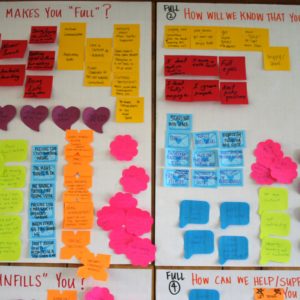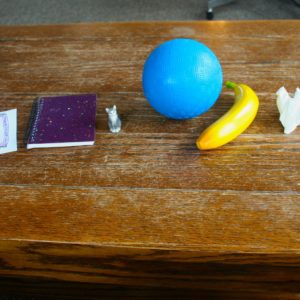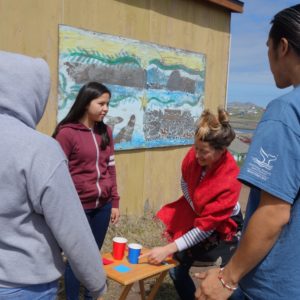Experiencing accelerated learning can be magnificent, meaningful, emotionally moving, exhilarating. And yet, the techniques and principles of accelerated learning are simple and concrete.
Recently, I watched a video of speaker/author Stephen Covey talking about the power of what he called the “Indian talking stick”.
[youtube http://www.youtube.com/watch?v=HUxi-Zc45tA&w=480&h=390]
By definition, self-sufficient indigenous communities have mastered creating and maintaining the accelerated learning environment tuned to their place and time. This is what makes them self-sufficient – everything that the community needs, the diverse array of tools, materials, skills, are learned and relearned every generation, on a very small scale. If you’re paying attention, this should strike you as miraculous! Such a variety of cross-training and specialization on the village scale is remarkable. So it makes sense that such communities could develop a robust, effective conversational process that works even when relations are strained.
When I see something that works, I immediately start applying my “fluency hunter’s eye” to it: what are the techniques that make up that approach (or tool)? What “rules of the game” have they applied to generate that particular accelerated learning environment? Doing this keeps my skills sharp and helps me to understand and borrow insightful new (or old!) techniques. WAYK isn’t a system of brand-new methods, it’s a system for using anything that works. Things that work have often been around for a while – a long while!
The talking stick can be seen as the layering of three techniques: obviously!, my turn/your turn, and total physical response.
All application of technique is a response to a specific context, with particular people. There is no one-size-fits-all approach, but only addressing the situation at hand.
1. Obviously!: Perhaps you’re in a difficult conversation, where the intensity of emotions and other factors are making it difficult to have a safe converation. Or perhaps you’re dissatisfied with a superficial exchange, and you want to make it richer. You need something that will make you obviously! aware of what to say, and how to say it.
2. My Turn/Your Turn: You employ the “traffic cop” of all game play, by trading turns in the conversation, using verbal and gestural language to indicate whose turn it is. But perhaps this still isn’t obviously! enough – you’re still getting mixed up due to emotions, or the conversation still doesn’t feel rich enough. So…
3. Total Physical Response/TPR: by passing a physical object back and forth, the participants in the conversation have a whole-body sense of the give-and-take of a healthy conversation. There is no ambiguity or guessing as to what to do, when.
Now, there’s one or two more elements to the “talking-stick” conversational process that Stephen Covey is speaking of, but that’s a good start for understanding how and why you apply techniques to improve the learning, communication, and performance environment. It really is that simple – with this approach you can generate all kinds of tools and games that enrich and accelerate whatever situation you find yourself in.
So get out there and play with your “fluency hunter’s eye”!




